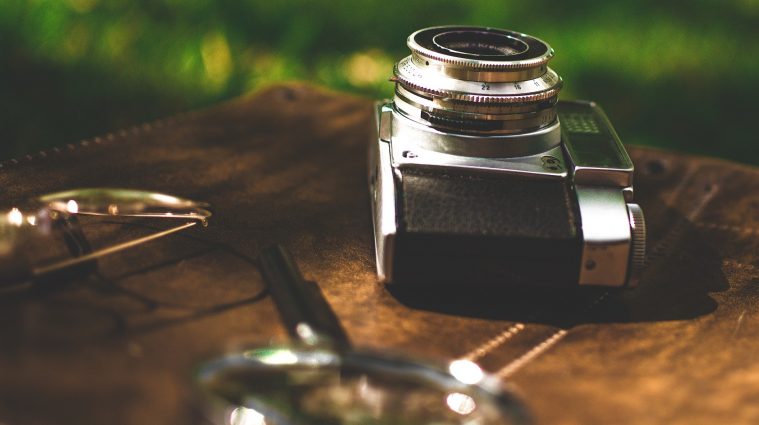Equipment don’t fail me now
When it comes to the tools of the trade for collecting and caring for research data, the doctoral candidate Alfred Issendorf, the protagonist of the novel “Beyond Sleep”, gets into an awkward situation. Which lessons could today’s PhD candidates learn from a fictional example from the 1960s?

In the novel Beyond Sleep, originally published in Dutch as Nooit meer slapen, by W.F. Hermans in 1966 [1], four doctoral candidates – Alfred from the Netherlands and three Norwegian researchers - conduct geological fieldwork in the north of Norway as part of their individual projects.
Suitability to context
Even tough Alfred has no experience with fieldwork in Norway, he considers himself as well-prepared when it comes to his personal equipment. However, during the fieldwork trip he realizes that his equipment, that served him well elsewhere, is less suitable in the landscape that he finds himself in: e.g. “Arne, Qvigstad and Mikkelsen are wearing knee-high rubber boots, I am the only one with ordinary leather hiking shoes. Just one wrong move and my feet will be sopping wet for the rest of the day” (p. 87).
Lesson 4: When you are collecting data in a context that is new to you, find out enough about the scenario to assess if your usual equipment – personal and for data collection – is suitable there.
How could this lesson be translated to your own discipline and the methods you are using? In which situation could an empirically curious legal scholar show up with equipment that is not suitable for the context? Let’s assume that besides your legal analysis you are conducting interviews with professionals in the justice and security sector. In a previous project with a different group of respondents you established the habit of digital note taking on your laptop and recording with your phone. This worked quite well for you and you show up with this equipment for the appointment with your respondent. There, friendly but firmly, the security staff insists that you leave your multifunctional electronic devices in a locker before being allowed to enter a certain part of the building.
Risk assessment
In the fictional example Alfred does not only lack knowledge about the territory, but also an awareness of important risks to his equipment. The risks are even greater for him because of his limited experience and less than optimal physical condition as described in the previous blog Oops!….I didn’t prepare….. His Norwegian friend is trying to warn him of the dangers and help him: “‘Let me take your camera and that map pocket.’ ‘Why? They’re not heavy.’ ‘Just let me take them, then they won’t get wet in case you slip.’” (p. 102). However, he cannot prevent the damage to the equipment in the long run. Alfred ends up in real trouble: his map of the region is wet and close to disintegration (p. 186), the compass is first suspected to malfunction and then lost (p. 185, 186), his food is wet, he is low on provisions (p.193, 203) and data collection has become impossible:

“My notebook is soggy. (…) Writing is out of the question. The pencil doesn’t leave a trace on the damp paper, and pressing harder would only make holes in it. (…) This ravine is by far the most impressive phenomenon I’ve seen until now, but I’m incapable of making notes. What to do? Could take a couple of photographs, I suppose. (…) I twist the knob to advance the film. It’s stuck! Some water must have got in, dissolving the gelatin coating and jamming the mechanism. There’s nothing I can do about it. I can’t open the camera, as I’d lose the whole film. It’s not going to get dark here for weeks, and if I don’t open the camera I’ll never get rid of the moisture” (pp. 182-183).
In the fictional fieldwork situation, water is one of the biggest threats to most of the equipment and data collected. Another one is loss of equipment. Alfred finds himself in the situation that parts of his expensive equipment are of personal value – gifts from family members – but have not been chosen by himself for the fieldwork trip. Like this he owns a nice wrist watch, but it is not waterproof (p. 188). His compass is stored in a fine leather case attached to his belt, which is less practical than it might appear. The devil is in the details when it comes to protecting research equipment. A simple string that is connected to a shirts breast pocket (p. 183) makes it possible to store it higher above the level of the water while crossing a river and it protects the compass itself against loss – instead of just securing the case that holds the compass. Alfred realizes during his trip that basic protection of his equipment, data and provisions would have been rather simple and affordable:
“I should have packed everything in plastic bags to be on the safe side, but I didn’t, just because Arne, Qvigstad and Mikkelsen didn’t either” (p. 193).
Lesson 5: Consider the risks to the different types of equipment (and research data) and where necessary take appropriate measures to mitigate risks.

Even though a lot of the equipment in today’s research scenarios might be more modern than the camera and pencil that Alfred uses, still a lot of equipment does not react well to water, exposure to extreme temperatures, fire, shocks, falls or contact with sharp objects. Like Alfred’s compass, they might be lost, but also stolen or damaged by incorrect usage.
When collecting digital research data – also in the case of seemingly low risk desk research - there are aspects to consider with regard to protection of equipment and research data. Check out the information that your university provides on information security and data protection and ask for advice where needed. The Data Management Expert Guide by CESSDA ERIC (Consortium of European Social Science Data Archives European Infrastructure Consortium) provides an overview of technical and organisational measures. The website Cybersave Yourself (CSY) has been developed for students and staff of research universities and universities of applied sciences. CSY contains tips, videos and games to better understand ‘cyber threats’ and what individuals can do to protect themselves.
Quality of equipment
Many problems during Alfred’s data collection could be connected to lack of awareness, knowledge and preparation. However, also the data collection of the Norwegian doctoral candidate Arne, who knows the territory and has more experience, is encountering problems with his equipment.
“‘My photographs don’t usually turn out very well.’ (…) ‘It isn’t that. Look, the lens is loose in the collar – that’s the problem.’ ‘Buy a new camera. Ask your father to get you one.’ ‘Oh, him. Every time I see him he asks sarcastically whether I’ve taken any pictures lately. The moment I show them to him he offers me a new Leica.’ (…) ‘I’d feel I’m not worthy of it.’” (p. 132)
Lesson 6: Good research and the researcher’s safety and security require reliable instruments and equipment that fulfill the current standards and requirements. Where possible, assess the expected quality of the data before the start of the data collection.
The fictional character Arne knows very well that the quality of his photographs will not be very good, but does not take any action that might lead to data with a better and more constant quality. Usually, there would be more options for taking action than “doing nothing” and “buy a new one yourself”. So in case your equipment has issues, try to find ways to, for example, service, update, replace, rent, share or borrow it or re-assess your research design before you start collecting data. Raise any relevant issues well in time with supervisors. Some of the possible actions require more time and planning – e.g. applying for funds or getting repairs done – , so it would not be something that should be left until shortly before the start of the data collection.
Modern equipment opens possibilities that were not available to Alfred, but make researchers more dependent on others when it comes to equipment and use of infrastructure. Before you start collecting data – and especially before you leave for a longer period of time -, make sure that devices such as laptop computers have all relevant software updates, that there are no issues with the hardware, and data transfer, data protection, back-up and communication options are sorted. In some cases, it might be difficult to tell directly if the quality of the data will be good enough. To assess the quality, it can be an option to do a trial run of the intended data collection, such as simulating an interview situation or taking test photographs, and performing – technically – all the following steps in data transfer, processing and analysis.
Concluding remarks
To some senior researchers the lessons mentioned in this and the previous blog might seem very obvious. Nevertheless, when research activities or the data collection environment are new to junior researchers, it still might be a challenge to prepare for a data collection scenario, which is something that senior scholars might not always realize. Especially, when there is time pressure, some crucial details might be forgotten. Data management planning helps with preparing all aspects of the data collection. Hopefully these blog posts have made the topic less abstract, even though it is beyond the scope of this blog series to translate the lessons derived from the novel to the great variety of research methods and disciplines.
This blog post is part of the series “Research in fiction through the lens of data management”.
How to cite this blog post (Harvard style)
Boom, M.S. (2019) Equipment don’t fail me now. Available at: http://europeanbordercommunities.eu/blog/equipment-dont-fail-me-now" (Accessed [date]).
Footnotes
[1] For international readers this blog post refers to an English translation Hermans, W.F. (2007). Beyond Sleep. (I. Rilke, Trans.). New York, NY: The Overlook Press. (Original work published 1966, translation of the 27th impression published in 2003 by De Bezige Bij).


